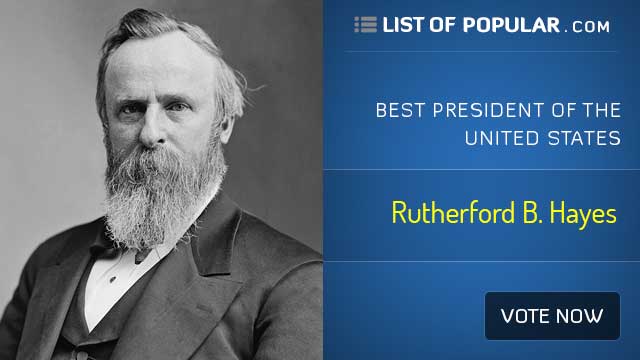The Best US President - Rutherford B. Hayes
Early Life and Education
Rutherford Birchard Hayes, born on October 4, 1822, in Delaware, Ohio, emerged as the 19th President of the United States. His early life was characterized by a strong commitment to education. After graduating from Kenyon College in 1842, Hayes went on to study law at Harvard Law School, laying the foundation for a distinguished legal and political career.
Military Service and Civil War
Hayes' life took a patriotic turn with the outbreak of the Civil War. He served in the Union Army, rising to the rank of major general. His leadership in key battles, including the Battle of South Mountain and the Battle of Cedar Creek, earned him acclaim for his bravery and strategic acumen. Hayes' military service became a cornerstone of his political identity.
Political Ascent in Ohio
After the war, Hayes entered the realm of politics, rising through the ranks in Ohio. He served as Governor of Ohio, where his commitment to civil service reform and economic stability garnered attention. Hayes' reputation as a principled and reform-minded leader positioned him as a rising star within the Republican Party.
The Controversial Election of 1876
The presidential election of 1876 proved to be one of the most contentious in American history. Hayes faced off against Democrat Samuel J. Tilden. The results were inconclusive, with disputed electoral votes in several states. A special electoral commission was formed to resolve the crisis, and in a controversial decision, awarded the disputed votes to Hayes. This marked the end of the post-Civil War Reconstruction era, with Hayes promising to unite the nation and promote civil service reform.
Civil Service Reform and Compromise
Once in office, President Hayes fulfilled his promise to reform the civil service system. He appointed reform-minded individuals to key positions and advocated for merit-based appointments rather than political patronage. Hayes' commitment to civil service reform set a precedent for future administrations and aimed to restore public trust in government institutions.
The Great Railroad Strike of 1877
Hayes faced a significant challenge during his presidency with the outbreak of the Great Railroad Strike of 1877. The widespread labor unrest and violence posed a threat to the nation's stability. Hayes, committed to maintaining law and order, deployed federal troops to quell the unrest. His response to the strike underscored his dedication to preserving the union and upholding the rule of law.
One-Term Presidency and Legacy
Rutherford B. Hayes chose not to seek re-election, adhering to a pledge he made before assuming office. His presidency, though marked by controversy in its origins, was characterized by a commitment to unity and reform. The end of Reconstruction and the emphasis on civil service reform were central themes of his single term in office. After leaving the presidency in 1881, Hayes continued to advocate for education and civil rights until his death on January 17, 1893.
Conclusion
Rutherford B. Hayes' legacy is one of principled leadership, marked by his dedication to civil service reform and efforts to heal the nation after the turmoil of the Civil War. His presidency, while often overshadowed by the circumstances of his election, contributed to shaping the trajectory of post-war America.

